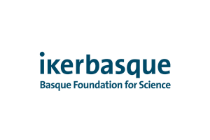Transfer
MULTIMAP: a new multilingual visual naming test for mapping eloquent areas during awake brain surgery
A database of 218 standardized color pictures representing both objects and actions. These images have been tested for name agreement with speakers of Spanish, Basque, Catalan, Italian, French, English, German, Arabic, and Mandarin Chinese, and have been controlled for relevant linguistic features in cross-language combinations. The MULTIMAP test for objects and verbs represents an improvement over the DO 80 monolingual pictorial set currently used in language mapping, providing an open-source, standardized set of up-to-date pictures, where relevant linguistic variables across several languages have been taken into account in picture creation and selection.
Download: https://git.bcbl.eu/sgisbert/multimap2/
Full description: Gisbert-Muñoz, S., Quiñones, I., Amoruso, L., Timofeeva, P., Geng, S., Boudela, S., Pomposo, I., Gil-Robles, S., & Carreiras, M. (2021). MULTIMAP: Multilingual picture naming test for mapping eloquent areas during awake surgeries. Behavior Research Methods, 53, 918–927. https://link.springer.com/article/10.3758/s13428-020-01467-4
LSE Sign: a lexical database of 2,400 signs of Spanish Sign Language with detailed phonological encoding
A lexical database Spanish Sign Language (LSE – lengua de signos española), including 2,400 signs and 2,600 pseudosigns. Each sign is coded for a range of properties, including general linguistic information (part of speech, semantic field, etc.) as well as detailed phonetic features (handshape, location, non-manual features). The web interface (see below) offers a search function that allows any of the coded features to be used to define the search.
Access: http://lse-signcom/article/10.3758/s13428-020-01467-4.bcbl.eu
Full description: Gutierrez, E., Costello, B., Baus, C., & Carreiras, M. (2016). LSE-Sign: A Lexical Database for Spanish Sign Language. Behavior Research Methods, 48:123–137. https://doi.org/10.3758/s13428-014-0560-1









